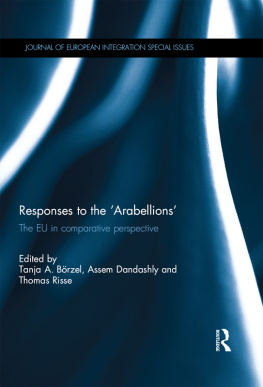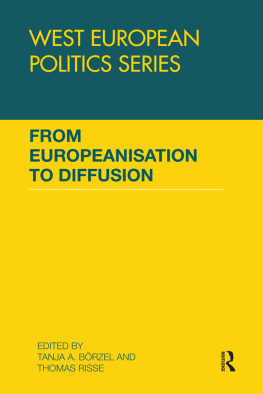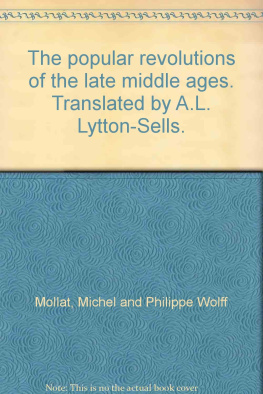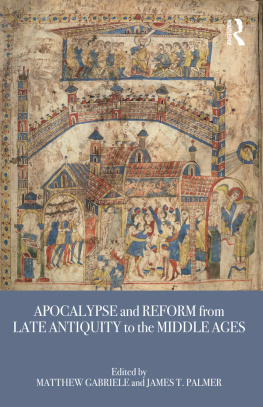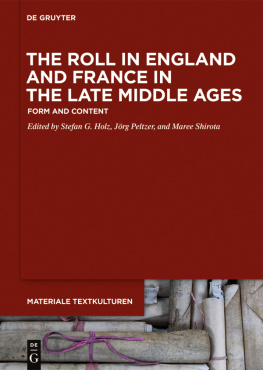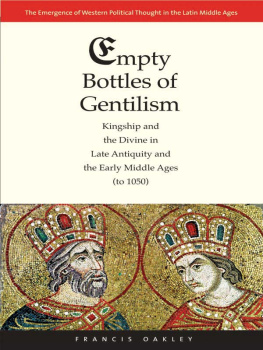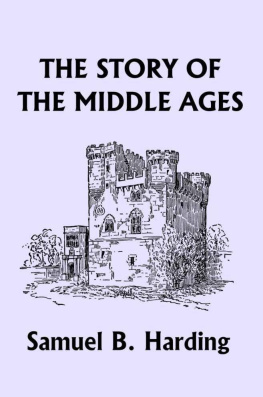Tanja Skambraks - Markets and Their Actors in the Late Middle Ages
Here you can read online Tanja Skambraks - Markets and Their Actors in the Late Middle Ages full text of the book (entire story) in english for free. Download pdf and epub, get meaning, cover and reviews about this ebook. year: 2020, publisher: De Gruyter, genre: Business. Description of the work, (preface) as well as reviews are available. Best literature library LitArk.com created for fans of good reading and offers a wide selection of genres:
Romance novel
Science fiction
Adventure
Detective
Science
History
Home and family
Prose
Art
Politics
Computer
Non-fiction
Religion
Business
Children
Humor
Choose a favorite category and find really read worthwhile books. Enjoy immersion in the world of imagination, feel the emotions of the characters or learn something new for yourself, make an fascinating discovery.

- Book:Markets and Their Actors in the Late Middle Ages
- Author:
- Publisher:De Gruyter
- Genre:
- Year:2020
- Rating:3 / 5
- Favourites:Add to favourites
- Your mark:
- 60
- 1
- 2
- 3
- 4
- 5
Markets and Their Actors in the Late Middle Ages: summary, description and annotation
We offer to read an annotation, description, summary or preface (depends on what the author of the book "Markets and Their Actors in the Late Middle Ages" wrote himself). If you haven't found the necessary information about the book — write in the comments, we will try to find it.
Markets and Their Actors in the Late Middle Ages — read online for free the complete book (whole text) full work
Below is the text of the book, divided by pages. System saving the place of the last page read, allows you to conveniently read the book "Markets and Their Actors in the Late Middle Ages" online for free, without having to search again every time where you left off. Put a bookmark, and you can go to the page where you finished reading at any time.
Font size:
Interval:
Bookmark:
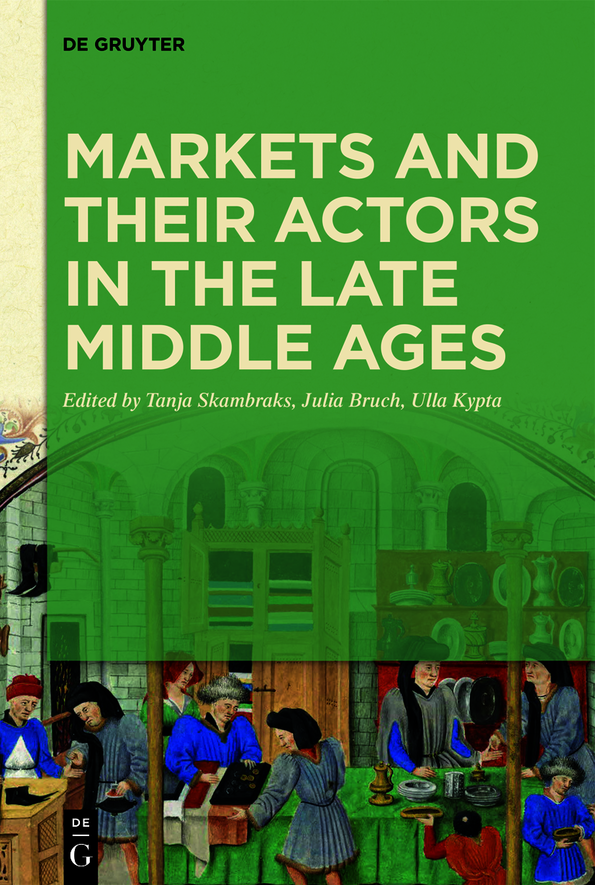
ISBN 9783110642216
e-ISBN (PDF) 9783110643756
e-ISBN (EPUB) 9783110642421
Bibliographic information published by the Deutsche Nationalbibliothek
The Deutsche Nationalbibliothek lists this publication in the Deutsche Nationalbibliografie; detailed bibliographic data are available on the Internet at http://dnb.dnb.de.
2021 Walter de Gruyter GmbH, Berlin/Boston
Markets are a ubiquitous topic in premodern economic history. Studies on the premodern market offer an interesting field for discussing the challenges as well as the fascinations of doing premodern economic history: this is one of those areas where premodern and modern concepts and perceptions at first glance contradict each other, but on a second and closer glance each helps to understand the other. At its annual conference in Basle in June 2018, the Arbeitskreis fr sptmittelalterliche Wirtschaftsgeschichte [Research Group on Late Medieval Economic History] (http://www.wirtschaftsgeschichte.org) came together to discuss how the market was perceived in different times and places during the Middle Ages and early modern period. In a distinctly cultural-historical approach, we focused on the agents who were active regarding the market and studied their ways of using and perceiving, regulating, and dealing with the market. Our aim was to grasp how premodern contemporaries conceptualized the market, how they understood market exchange. This perspective yielded some interesting results: the market as an abstract concept was not just developed in modern times. The difference between premodern and modern understandings of the market lies not so much in the degree of abstraction, but rather in the fact that for premodern contemporaries, two issues were of major importance, namely: who was allowed to take part in the market, and how was the market to be organized?
This small volume does not include all the papers that were given at the conference in Basle. Most of the speakers presented work in progress that was not yet ready to be published. But since the results of our discussions seem to us to be of some importance for further research on the premodern market a very lively field of research in economic history today we decided to publish a small selection of papers that present evidence for our overall hypothesis, which we introduce in this chapter. These are of course only first instances, first impressions gained by an agent-based focus on the sources. The hypothesis can by no means be regarded as verified by the examples presented in the articles; rather, they justify that the hypothesis is being proposed at all. The final chapter offers some reflections on how the market can and should be studied in further research. We hope that it will be discussed further, and that this volume can perhaps make a small contribution to the ongoing debate on the market today and its history in premodern times.
In her opening theoretical chapter, Ulla Kypta examines the concept of the market and the integration of agents in markets, exploring similarities and differences between premodern and modern forms. She also points out possible misunderstandings.
Kypta asks the fundamental question: what is a market? It has proved effective to split the concept of a market into two semantic components: (a) the marketplace, as a physical place of time-limited trading or market activity, and (b) more abstractly, closer to our ideas today, an exchange mechanism. Nevertheless, it would be wrong to treat the modern market as an exchange mechanism and to see the premodern market exclusively as a marketplace. In this volume, for example, we tackle three different perspectives on the market. Franziska Quaas examines the concept of the market in early medieval theological texts using a semantic approach, Franziska Neumann studies the market as a complex arena of social interaction, and Eva Brugger examines a specific marketplace.
In her paper, Kypta also asks questions about what could be traded, whether the market was regulated, and what had to be regulated in order for the market to run smoothly. She shows by way of example that in theoretical thinking about the market in premodern times, the focus of the debates was on just prices, just trade, and dealing with the question of usury. And these debates evoke what can be seen in Neumanns article: that the market was conceived in the sense not only of a marketplace but also of an abstract exchange mechanism.
It must also be remembered that in the premodern economy, using the market was only one of several options for the exchange of goods and services; in addition, gift exchange and payment of manorial dues, as well as the exchange of information, played a decisive role.
Kypta introduces several market agents: in addition to typical buyers and sellers, there were regulatory authorities and (cooperative) organized communities. It is important to note that the same rules did not apply to all market participants, for example the temporary exclusion of foreign traders or a compulsory staple (Stapelzwang).
Quaas investigates the understanding of the market and markets among early medieval authors a field of interest hitherto mostly neglected. Her hypothesis is that research in order to avoid anachronistic meanings can best capture the early medieval market through the contemporary understanding of the market and market events. She applies a semantic analysis and examines Latin texts that enjoyed great popularity and influence on the theoretical thinking of learned people (especially monks) in the early Middle Ages, such as those by the Church Fathers, Isidore of Seville, Hincmar of Reims, Theodulf of Orleans, and others. By analysing the semantic environment of the word market in these texts, she can show that market is connoted as a marketplace with negative characteristics. Hence, a good Christian should avoid this noisy environment of idle talk, vices, and sins. This interpretation of the market was drawn from late antiquity and applied not only to the marketplace but also to trade, i.e. to the market as a medium of exchange and to traders as its actors. The fact that the Carolingian capitularies contain numerous rules for the participation of clerics in the market shows that these writings were not just theoretical.
The semantic analysis also shows that the word market plays a role in the word field of the opposition of heaven and earth. Commercium is understood not only as an exchange of goods but also as an exchange between the divine and the terrestrial spheres. Christian theologians used the vocabulary and the understanding of market in the sense of barter and exchange here, and this understanding in turn had an impact on the medieval understanding of market and exchange.
Quaass essay shows how profitable it is to distinguish between market as marketplace and market as exchange mechanism, and to examine the historical understanding of both and the interactions between them. It should not be forgotten that the medieval understanding of the market was deeply influenced by Christianity. Quaas shows that in late antique and early medieval writings, a mercantile language was already used to describe complex theological developments. This use intensified throughout the high and later Middle Ages, where it became connected with the Commercial Revolution. Thus, a connection between mercantile semantic and socio-economic developments since the eleventh century can no longer be assumed.
Neumann analyses the early modern mining industry in the Saxon ore regions and its agents. She shows how the concept of the market as an exchange mechanism can be applied to the early modern mining economy in Saxony. This industry needed enormous capital contributions for the exploitation of new ore veins and innovation in mining. Neumann understands the mining bureaucracy as a hybrid administration. This administration combined a more traditional territorial administration (based on the regal right to exploit metal deposits) in the economic sector with a shareholder system involving foreign capital and investors. For Neumann, this hybrid administration was a formal organization determined by categories of membership, hierarchies, safety, and rationality. The organization of mining was no longer related to the Saxon princes and to one person, but is to be understood as a bureaucracy. Its written remains such as ordinances and accounts should be interpreted as displays in the Luhmannian sense. This administrative writing was mainly produced to ensure that (supra-regional) investors also invested in shares
Font size:
Interval:
Bookmark:
Similar books «Markets and Their Actors in the Late Middle Ages»
Look at similar books to Markets and Their Actors in the Late Middle Ages. We have selected literature similar in name and meaning in the hope of providing readers with more options to find new, interesting, not yet read works.
Discussion, reviews of the book Markets and Their Actors in the Late Middle Ages and just readers' own opinions. Leave your comments, write what you think about the work, its meaning or the main characters. Specify what exactly you liked and what you didn't like, and why you think so.

